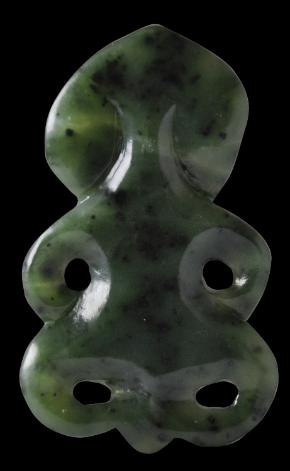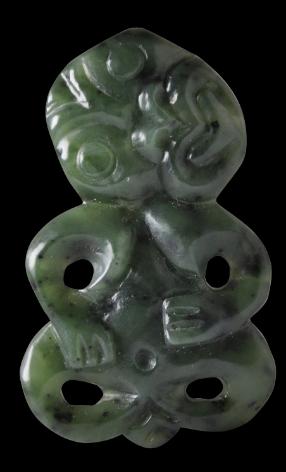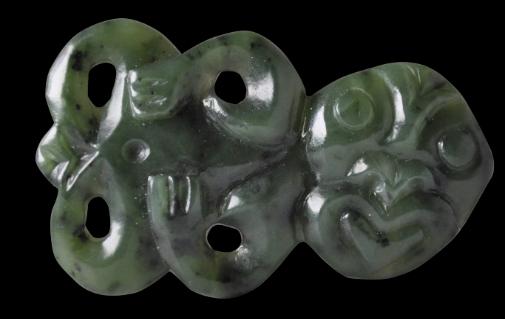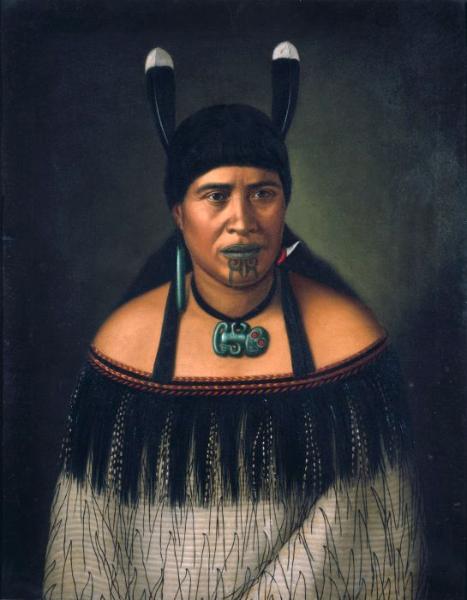
Greenstone Tiki, Maori People, New Zealand, probably 19th century
Greenstone Hei-Tiki Pendant
Maori People, New Zealand
probably 19th century
height: 5.4cm, width: 3.2cm, weight: 17g
Hei-tiki pendants (‘tiki’ refers to the image and ‘hei’ means to suspend from the neck) carved in local greenstone (nephrite) are among the most iconic of Maori arts. Dating them is difficult but this example, which was acquired in the UK, probably dates to the 19th century. It is unusually small and is one of a small group that does not have a pierced hole at the top of the head to allow it to be suspended upright but instead was designed to be worn on its side. It is for this reason that the tiki’s head sits on its shoulders sharply on its side, so that when the pendant is worn on its side, lengthwise, the head is upright.
Tiki prendants were worn by the Maoris for largely decorative reasons. Their origins might lay in ancestor worship or fertility rites but by the time of white settlement they were already largely decorative than connected to ritual.
it is unclear whether this example was made for indigenous use or for colonial visitors but if the latter, it would have more likely been drilled at the top to allow more conventional suspension.
It is in excellent condition and is very wearable.
References
Starzecka, D. C., R. Neich & M. Pendergrast, The Maori Collections of the British Museum, British Museum Press, 2010.
Provenance
UK art market
Inventory no.: 4515
SOLD




Hinepare, a woman of the Ngāti Kahungunu tribe, wearing a hei-tiki on its side. A painting by Bohumír Gottfried Lindauer (1839-1926).

